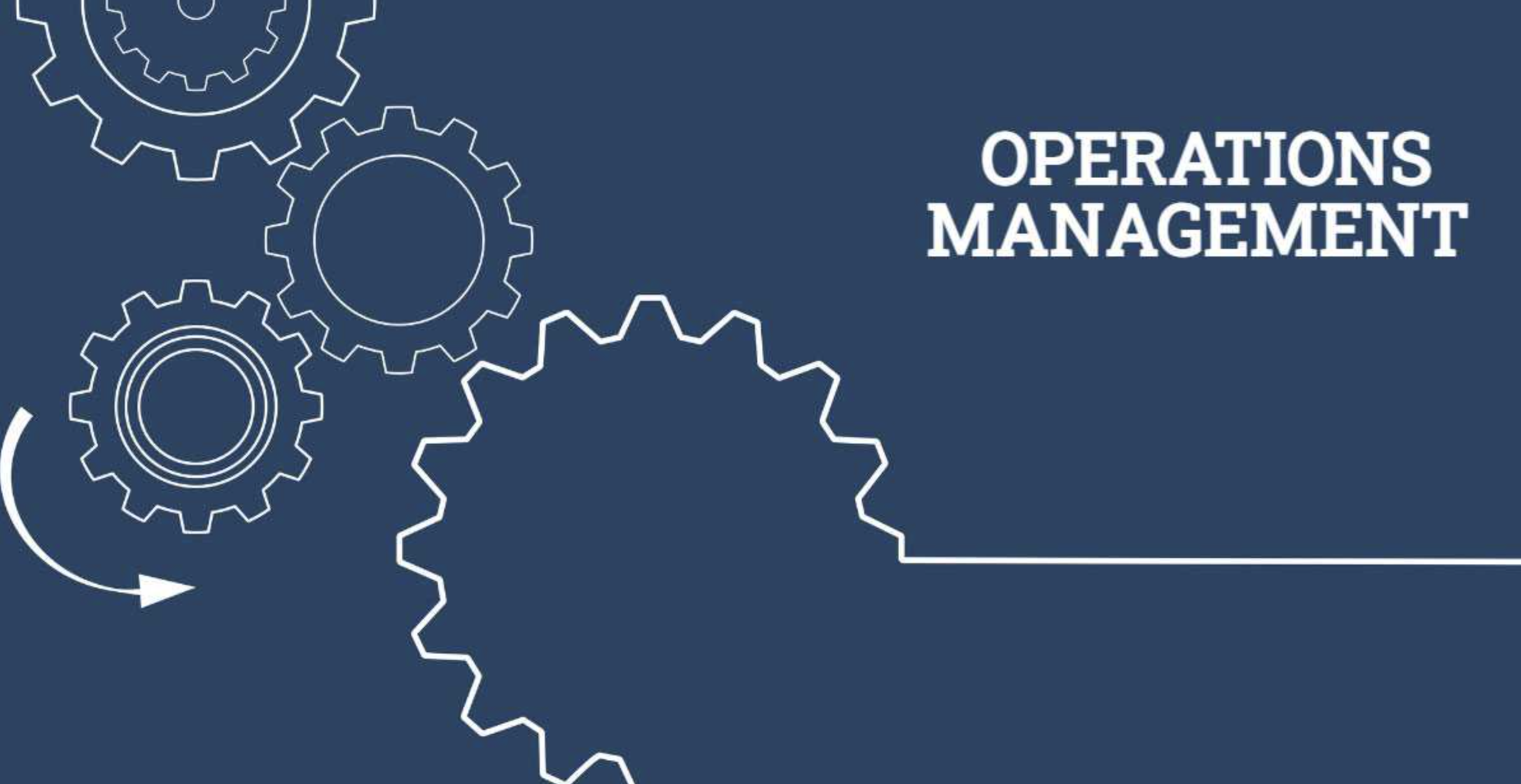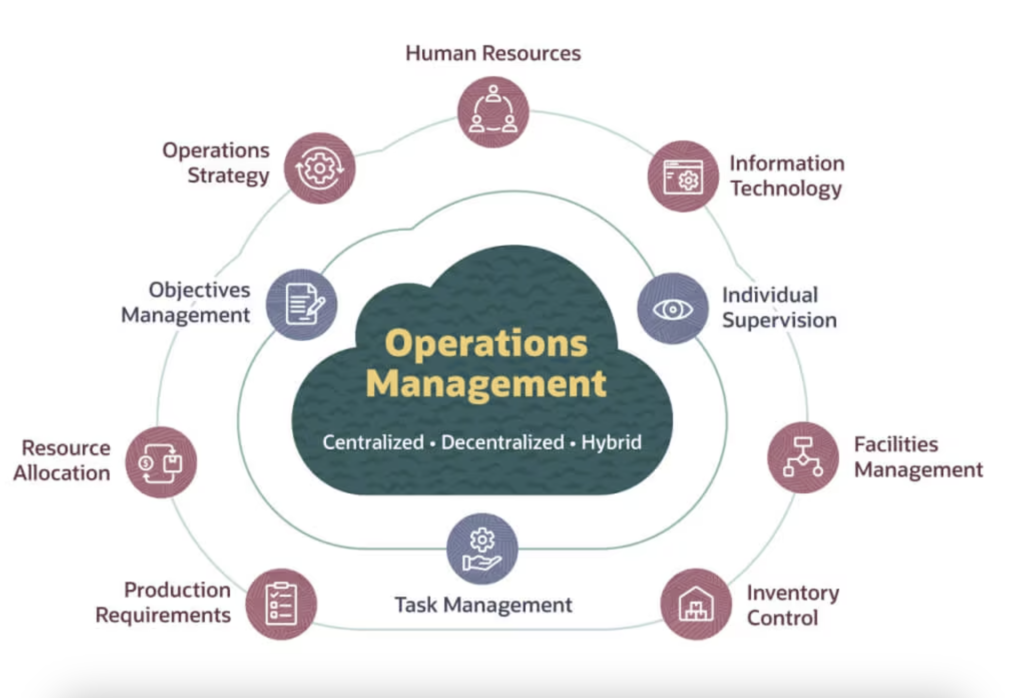
IT Operations Management Best Practices for Big Company (Image by Shiksha)

IT Operations Management Best Practices for Big Company (Image by Shiksha)
IT operations management best practices for enterprise are proactive, data-driven approaches to optimize IT operations, ensuring efficiency, reliability, and security at scale.
There’s no dispute about the fact that IT Operations Management (ITOM) plays a pivotal role in maintaining the efficiency, reliability, and security of enterprise IT environments, particularly in large-scale operations.
With these essential roles, the benefits of IT Operations Management are broad and multifaceted for enterprises.
A 2021 case study from ISACA highlights the importance of digital transformation in IT operations for an urban Aboriginal agency in Toronto. Faced with the pandemic, the agency struggled with IT challenges like network bottlenecks and unreliable Wi-Fi.
Adopting a digital transformation strategy driven by a modernized IT infrastructure and an experienced CIO (Chief Information Officer) was crucial. This transformation focused on creating a data-driven organization and improving IT capabilities.
The study underlines the necessity of preparing organizations for digital transformations, emphasizing that success in such endeavors is rare without a strong IT foundation.
Similarly, the 2022 State of IT Operations Survey Report by Automox reveals significant trends in IT operations. The report found that 58% of companies are shifting to permanent hybrid work models, and 60% use more than ten tools for endpoint management.
Notably, 99% of organizations plan to use cloud-native solutions for almost all endpoint management needs within two years. The study underscores the ongoing shift towards cloud-native solutions and the need for IT operations to adapt to increasingly complex environments.
The report also highlights the challenges in endpoint management and the necessity of automation to improve efficiency and manage complexity.
The two reports above emphasize how adopting ITOM best practices is not just about technology upgrades but also about understanding and preparing for the complexities of modern IT environments.
The focus should be on a broad range of solutions to meet the evolving needs of IT operations. That’s why we’re going to talk about ITOM best practices here.
Incident management best practices deliver a fast and effective response to unplanned events or service interruptions. Of course, to get efficient best practices, you need specific ITOM roles and responsibilities.
Therefore, the roles and responsibilities in the ITOM directly affect the best practices. You can break down ITOM roles and responsibilities more in our article here.
Now, let’s delve into the details of two key best practices: standardized processes and dedicated response teams.
Standardizing incident management processes is vital for large enterprises. This includes defining clear steps for incident categorization, prioritization, and resolution.
Effective categorization helps quickly identify the type and severity of incidents, leading to more efficient allocation of resources. Prioritization ensures that the most critical incidents are addressed first, minimizing potential impacts on business operations.
The resolution involves identifying the root cause and implementing solutions to prevent recurrence. Using frameworks like NIST (National Institute of Standards and Technology), ISO (International Organization for Standardization), or ITIL (Information Technology Infrastructure Library) can provide a structured approach to managing incidents.
These frameworks cover essential phases like preparation, detection, containment, eradication, restoration, and post-incident evaluation. They also emphasize the importance of continuous process evaluation and updates based on changing IT infrastructure and threat landscapes.
Having dedicated incident response teams is crucial in large enterprises. These specialized teams, equipped with the right skills and training, can significantly enhance the speed and effectiveness of incident response.
They should include roles like incident response managers, security analysts, and other technical and supporting members. Regular training and incident response exercises are necessary to prepare these teams for actual incidents.
Automation can augment these teams’ capabilities, allowing them to manage high volumes of data and respond to incidents more efficiently. In cases where in-house capabilities are insufficient, outsourcing some or all incident response tasks to managed security service providers can be beneficial.
These strategies underscore the importance of a well-structured and integrated approach to managing changes in IT operations, which is crucial for maintaining operational stability and efficiency in a dynamic and evolving technological landscape.
These policies should encompass the entire lifecycle of a change, from initial proposal to final implementation and review. A vital component of these policies is the involvement of a Change Advisory Board (CAB), which plays a pivotal role in assessing the risks and impacts of proposed changes.
The CAB’s responsibilities include rigorous risk assessments and careful evaluation of change requests to ensure the integrity and operational efficiency of the IT network.
This process includes analyzing the potential impacts on various parts of the organization and ensuring that all changes align with the company’s strategic objectives.
Moreover, having a structured approach to change management, like those outlined by ITIL standards, can provide a framework for organizations to manage changes more effectively and efficiently.
Integrating change management with broader IT Service Management (ITSM) frameworks can significantly enhance overall IT operations.
This integration ensures that change management processes are aligned with other IT service management activities, fostering a more holistic approach to managing IT services.
By incorporating ITSM frameworks, organizations can ensure that changes are implemented effectively and contribute to the continuous improvement of IT services.
This approach includes aligning changes with service strategies, design, and transition processes within the ITSM framework, ensuring that changes contribute positively to service quality and performance.
Additionally, integrating change management with ITSM frameworks can help better coordinate different IT functions, leading to more efficient and effective handling of changes in the IT environment.
The integration of advanced monitoring tools and automation in IT operations management enables organizations to manage their IT infrastructures proactively, ensuring optimal performance and minimizing the risk of disruptions in an increasingly complex and fast-paced IT landscape.
These tools provide the real-time insight essential for proactive problem resolution, enabling IT professionals to address issues before they escalate.
In today’s IT environments, which often include a wide variety of technologies, the challenge is to manage the vast amount of data and provide centralized visibility.
Advanced monitoring tools help manage this complexity by processing and prioritizing alerts and metrics, enabling more effective incident response. They also help ensure business continuity by identifying areas for improvement and tracking the impact of changes.
Automation is critical to keeping pace with rapidly changing configurations and resources in agile environments with frequent deployments and scaling.
Automation helps manage mundane tasks within monitoring workflows, freeing valuable resources for more critical functions.
However, careful tuning and supervision are necessary to avoid overreliance on automation, which can create blind spots.
Effective automation in IT operations speeds up processes. It enhances the accuracy and consistency of tasks performed, improving IT systems’ overall efficiency and reliability.

These IT operations management best practices for enterprise is for collaboration across IT teams are central to modern IT operations, enabling organizations to effectively navigate the complexities of today’s technology landscape.
Effective communication channels and collaboration platforms are crucial for seamless coordination across different functions.
Tools like Microsoft Teams have been instrumental in transforming how IT teams collaborate, offering integrated app experiences and improving efficiency.
For example, at Accenture, Microsoft Teams was deployed as a central platform, significantly enhancing team collaboration and productivity. The platform enabled users to access various apps and services, streamlining work processes and facilitating faster issue resolution.
This approach demonstrates how integrating sophisticated collaboration tools can transcend traditional communication barriers, leading to more efficient and interconnected IT operations.
Integrating ITOM with DevOps practices is increasingly vital in large enterprises. This collaboration between development and operations teams fosters a culture of continuous improvement, agility, and efficiency.
In practice, this integration means that IT operations are closely aligned with the development process, ensuring that the operational needs and potential issues are addressed early in the development cycle.
This collaboration leads to more efficient workflows, faster deployment times, and a more responsive IT infrastructure.
By combining the strengths of both DevOps and ITOM, enterprises can achieve a more dynamic and adaptive IT environment, capable of responding rapidly to changing demands and challenges.
Scalability and flexibility in IT operations management are akin to the backbone of a growing enterprise, allowing it to stretch and adapt to changing business landscapes.
Scalable Infrastructure
For managing scalable IT infrastructure, envision an ever-evolving entity that effortlessly morphs to handle the ebb and flow of digital demands.
It’s more about crafting an environment where expansion and increased demands are met gracefully, ensuring performance remains unscathed. Think of it as the IT version of a chameleon, changing colors to adapt but never losing its essence.
This adaptability supports growth and optimizes resources, ensuring that what’s available is used most effectively, without wastage. Imagine a world where your IT infrastructure breathes with your business, expanding and contracting as needed, a perfect symphony of demand and supply.
Transitioning to hybrid and multi-cloud environments is like a dance of balance and coordination, ensuring that no thread falls out of place.
In this realm, network disaggregation and virtualization, including SDN (Software Defined Networking) and NFV (Network Function Virtualization), emerge as vital players, introducing agility and cost-effectiveness into the network’s fabric.
Edge and cloud computing join hands to revolutionize data processing, moving it closer to where it’s needed most, thus ensuring speed and efficiency.
This intricate arrangement is not just about technological prowess but also about fortifying the defenses – cybersecurity and resilience become paramount.
It’s a world where data integrity and privacy protection stand as a guardian against the threats lurking in the digital shadows.
The exponential data growth, riding on the waves of connected devices and services, further accentuates the need for a scalable and flexible approach.
It’s about creating a robust yet adaptable framework that can embrace the swift currents of technological advancements like 5G, redefining connectivity and performance.
In a world where technology rapidly evolves, IT operations management (ITOM) best practices have become a cornerstone for enterprises seeking efficiency, reliability, and security at scale.
And we have to realize success in ITOM is about more than just adopting new technologies. But it is about understanding and adapting to the complexities of today’s IT environments.
That is why ITOM best practices are not static; they are dynamic principles that evolve with technological advancements and organizational needs.
As enterprises navigate the challenges of a digital-first world, the ability to adapt, scale, and respond proactively becomes not just a strategy for success but a necessity for survival.
Yes, successful ITOM requires a blend of proactive strategies, from robust incident management to integrating change management with ITSM frameworks.
This approach ensures the smooth running of current IT infrastructures and sets the foundation for future advancements and challenges.
So, are you ready for IT operations management best practices for enterprise? Or do you have to wait until the chaos in your enterprise becomes real and more real?